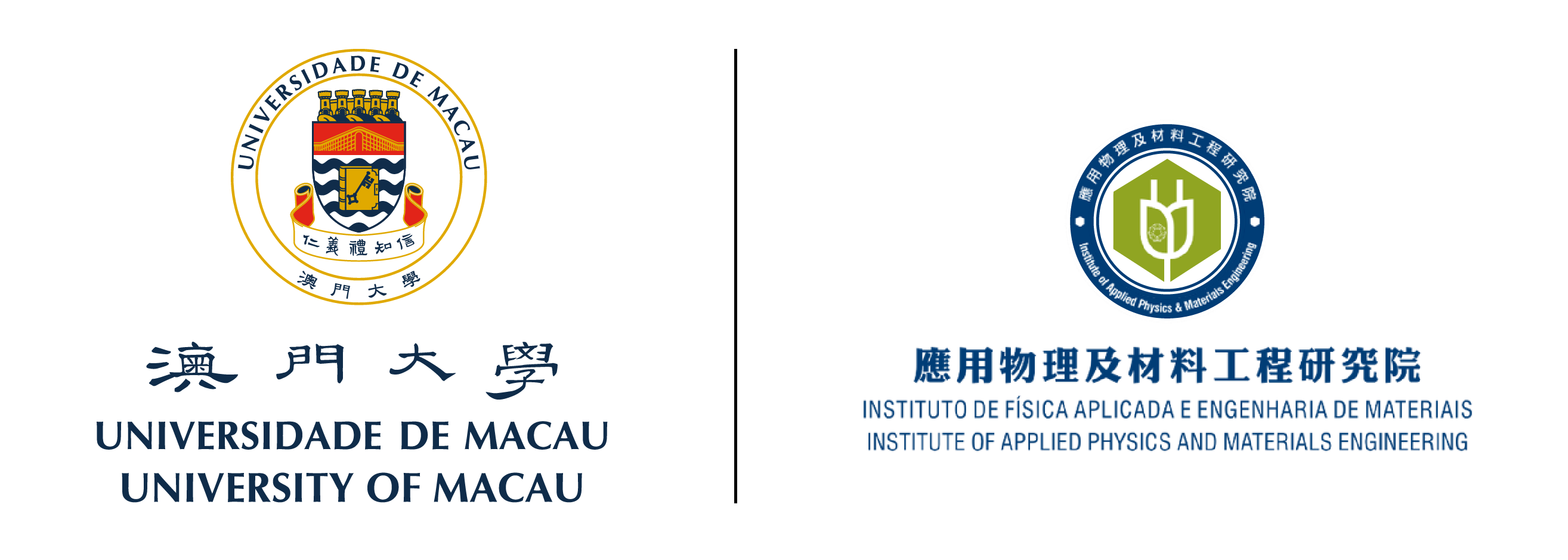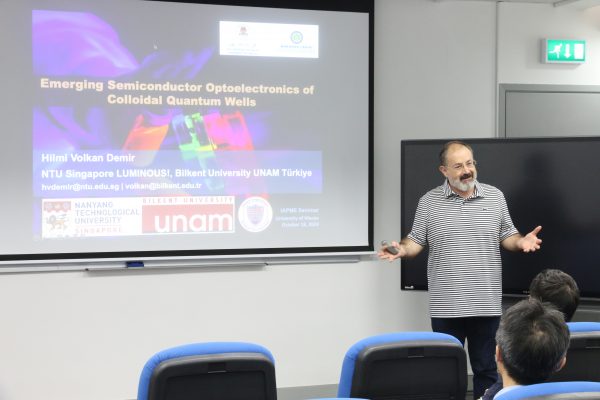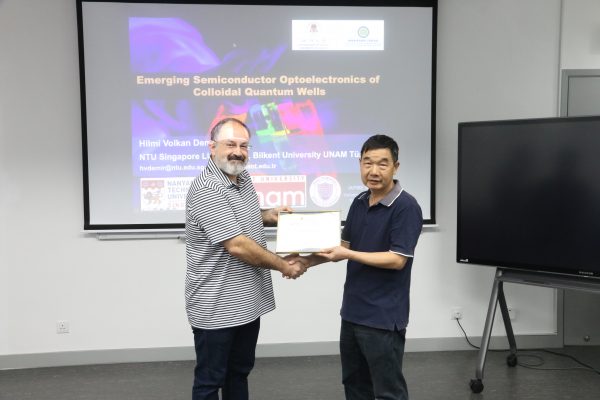Invited by Distinguished Professor Handong Sun, Prof. Hilmi Volkan Demir from Nanyang Technological University, Singapore, visited IAPME from 18 to 20 October 2024. Prof. Demir earned his PhD (2004) and MSc (2000) degrees from Stanford University, USA, and his BSc (1998) from Bilkent University, Ankara, one of the top engineering schools in Türkiye. His current research interests include the science and technology of semiconductor lighting and displays, nanocrystal optoelectronics, and smart metastructured implants. As a PI, Demir has contributed to commercialization and licensing of over 10 new enabling technologies, generating over 100 patent applications (granted and pending) as a principle inventor. His scientific and entrepreneurship activities resulted in several important awards including Nanyang Award for Research Excellence, NRF Investigatorship Award of Singapore, TÜBİTAK Science Award of Turkey, and EURYI Award of European Science Foundation. He is an elected IEEE Fellow’21 and OPTICA Fellow’20.
Prof. Demir delivered a seminar titled “Emerging Semiconductor Optoelectronics of Colloidal Quantum Wells”. His talk focused on atomically-flat, tightly-confined, quasi-2-dimensional quantum wells, also popularly nick-named ‘nanoplatelets’, particularly for use in lighting and displays. He also presented a powerful, large-area, orientation-controlled self-assembly technique for orienting these quantum wells either all face down or all edge up. He demonstrated three-dimensional constructs of their oriented self-assemblies with monolayer precision. By exploiting those materials and assembly technology, he showed record high efficiency from their colloidal LEDs and record high gain coefficients and record low lasing thresholds from their colloidal laser media using their heterostructures and/or oriented assemblies. In the Q&A session, Prof. Demir had zealous interaction with the audience.
During the visiting, Prof. Demir had a lab tour of IAPME. He has had close discussion with some professors and PhD students. He expressed deep impression on IAPME’s research facility and achievements.



